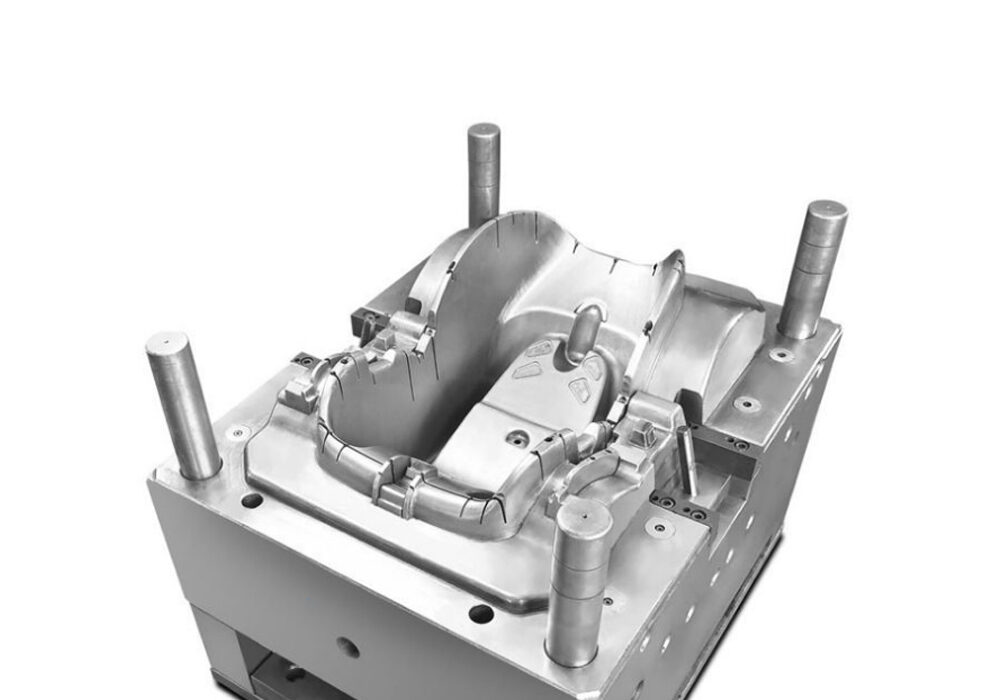The injection mold is an essential tool in the industrial production of plastic products. It is generally composed of a total of 7 major systems: pouring system, guide system, forming system, core pulling system, ejection system, cooling system and exhaust system. In the production of molds, the design of injection molds is a very important link. In the design link, comprehensive consideration must be taken of various factors to finally design the product to meet the production needs. So what are the main points in the design of injection molds Need attention?
Product wall thickness
1. Various plastics have a certain wall thickness range, generally 0.5 ~ 4mm, when the wall thickness exceeds 4mm, it will cause too long cooling time, produce shrinkage and other problems, you should consider changing the product structure.
2. Uneven wall thickness will cause surface shrinkage.
3. Uneven wall thickness will cause porosity and welding marks.
Reinforcement
1. The reasonable application of reinforcing ribs can increase product rigidity and reduce deformation.
2. The thickness of the rib must be ≤ (0.5 ~ 0.7) T product wall thickness, otherwise it will cause the surface shrinkage.
3. The slope of one side of the rib should be greater than 1.5 ° to avoid top injury.
Fillet
1. If the fillet is too small, it may cause stress concentration of the product and cause cracking of the product.
2. If the fillet is too small, it may cause stress concentration in the mold cavity and cause the cavity to crack.
3. Setting reasonable rounded corners can also improve the processing technology of the mold. For example, the cavity can be directly processed by R cutter milling to avoid low-efficiency electrical machining.
4. Different rounded corners may cause the movement of the parting line. You should choose different rounded corners or clear corners of the basic design of the injection mold design according to the actual situation.
Mold opening direction and parting line
At the beginning of the design of each injection molded product (Shanghai Mould Design Training School), it is necessary to determine its mold opening direction and parting line to ensure that the core pulling slider mechanism is reduced as much as possible and the influence of the parting line on the appearance is eliminated.
1. After the mold opening direction is determined, the structure of the product’s ribs, buckles, protrusions, etc. should be designed to be consistent with the mold opening direction as much as possible to avoid core pulling to reduce the stitching line and extend the life of the mold.
2. After the direction of mold opening is determined, the appropriate parting line can be selected to avoid undercuts in the direction of mold opening to improve appearance and performance. Shanghai Mold Design Training
Demolding slope
1. Appropriate stripping angle can avoid product hair (pulling). The release slope of the smooth surface should be ≥0.5 degrees, the surface of fine skin lines (sand surface) is greater than 1 degree, and the surface of coarse skin lines is greater than 1.5 degrees.
2. Appropriate stripping slope can avoid product top injury, such as top white, top deformation, and basic requirements of injection mold design.
3. When designing deep cavity structure products, the slope of the outer surface should be greater than the slope of the inner surface as much as possible to ensure that the mold core is not biased during injection, to obtain a uniform product wall thickness, and to ensure the material strength of the product opening.
Hole
1. The shape of the hole should be as simple as possible, generally round.
2. The axial direction of the hole is consistent with the mold opening direction, which can avoid core pulling.
3. When the length-to-diameter ratio of the hole is greater than 2, the draft angle should be set. At this time, the diameter of the hole should be calculated according to the small diameter size (maximum physical size).
4. The length-to-diameter ratio of blind holes generally does not exceed 4. Anti-hole punching
5. The distance between the hole and the edge of the product is generally greater than the aperture size.
Injection molding accuracy
Due to the unevenness and uncertainty of the shrinkage rate during injection molding, the accuracy of injection molded parts is significantly lower than that of metal parts. The dimensional tolerances of mechanical parts cannot be simply applied. The appropriate tolerance requirements should be selected according to the standard. China also issued GB / in 1993. T14486-93 “Dimensional Tolerance of Engineering Plastic Molded Plastic Parts”, the designer can determine the dimensional tolerance of the parts according to the provisions of the standard according to the plastic raw materials used and the use requirements of the parts.
At the same time, it is necessary to determine the appropriate design tolerance accuracy according to the comprehensive strength of the factory and the design accuracy of the peer products.
Deformation of injection parts
Improving the rigidity of the injection product structure and reducing the deformation. The basic points of the injection mold design. Which mold design should avoid the flat structure as much as possible, and set the flanging and uneven structure reasonably. Set reasonable reinforcement.
Deduction
1. The buckle device is designed to be shared by multiple buckle positions at the same time, so that the overall device will not be unable to operate due to the damage of individual buckle positions, thereby increasing its service life, and then considering more filtering and rounding to increase strength.
2. The tolerance requirements for the relevant dimensions of the buckling position are very strict. Too many reverse buckling positions are likely to cause damage to the buckling position. On the contrary, if there are too few reverse buckling positions, the assembly position is difficult to control or the assembly part is too loose. The solution is to reserve a way to easily change the mold to add glue to achieve.



